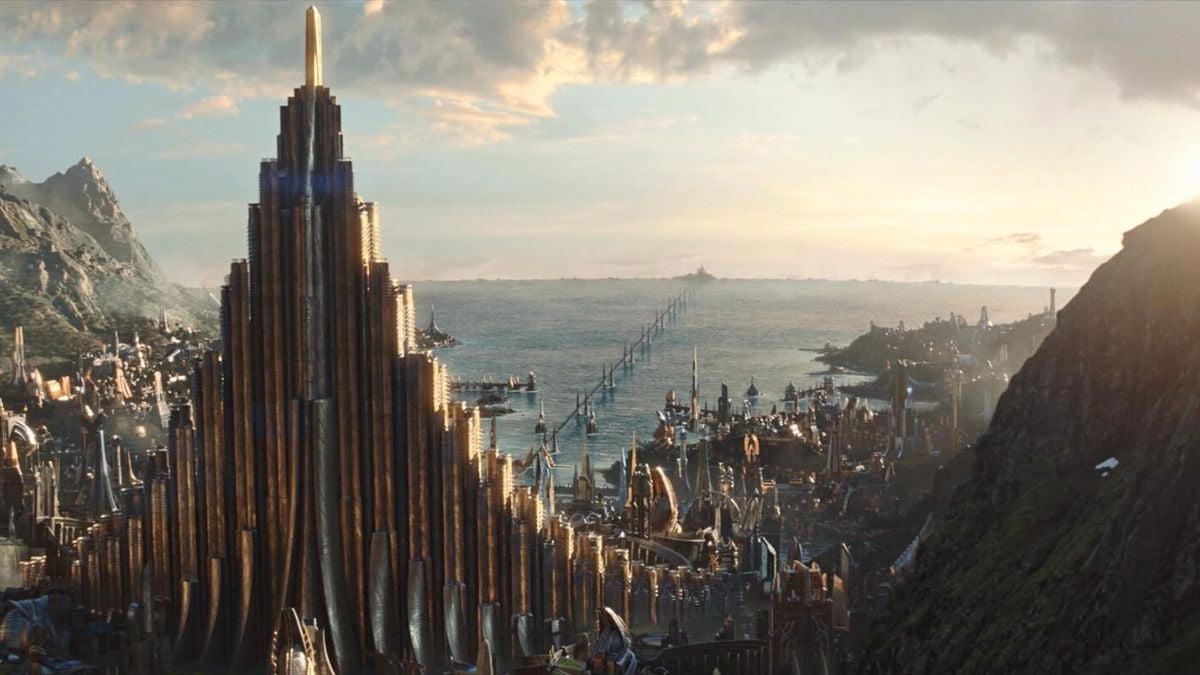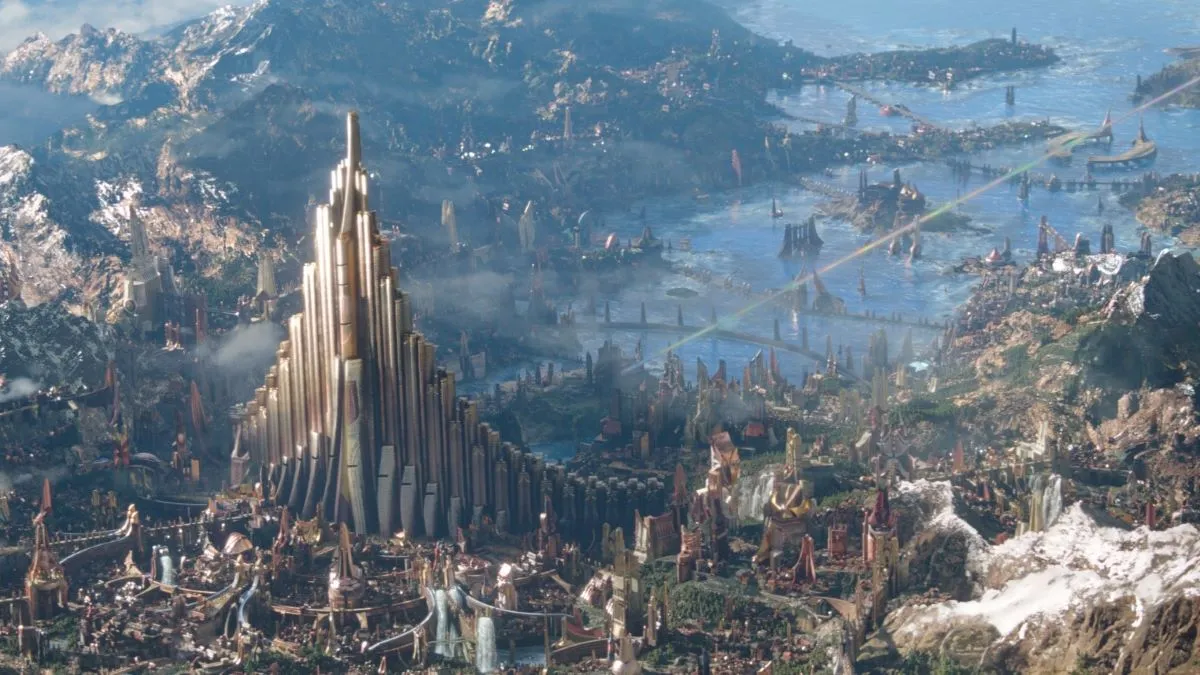On theaters with the MCU’s Thor, on TV with Zack Snyder’s Twilight of the Gods, and in video games like God of War, the Nine Realms keep showing up. But what are these realms in the original Norse mythology?
The concept of the Nine Realms is deeply rooted in ancient Norse beliefs. It represents the universe’s structure as understood by Viking-age Scandinavians. These realms were considered interconnected, held together by the great world tree Yggdrasil. The idea has persisted in popular culture. However, the true nature of the Nine Realms in original Norse sources is more complex and less clearly defined than many modern interpretations suggest.
The basis of our knowledge about Norse mythology comes from poems and sagas. These stories were told in different regions by various tribes, with changes and reinterpretations introduced over time. Furthermore, the oral tradition of Norse mythology has also led to the emergence of contradictions between different sources. So, even if Norse mythology revolves around multiple “worlds,” they don’t always align neatly with the popular conception of nine distinct realms.
What’s important to remember is that the realms are not always described as separate, distinct worlds in the original sources. Instead, they often overlap and intersect, with more fluid than fixed boundaries. Embracing reality is Yggdrasil, the colossal ash tree that connects and sustains the various realms of existence. This cosmic tree is the axis mundi, the central pillar around which the universe revolves. Its branches reach the heavens, while its roots delve deep into the underworld, creating a vertical structure encompassing all creation.
While the exact list and nature of realms vary depending on the source, the most commonly accepted version includes nine planes of existence connected by Yggdrasil. Above everything stands Asgard, home of the Aesir gods. Below all is Hel, the underworld where souls go after death. In between, we have Midgard, the plane of mortal men. The remaining six realms house all the different creatures and magic beings that populate Norse myths.
It’s important to note that this categorization is essentially a modern construct. The original Norse sources are often more ambiguous, with some realms mentioned more frequently than others and some barely appearing in the surviving texts. Still, the Nine Realms structure is a great starting point for understanding Viking cosmology. With that in mind, let’s break down each realm.
Asgard

Asgard is the celestial home of the Aesir gods, ruled by Odin and protected by Thor. It is connected to Midgard by the rainbow bridge Bifrost. This realm is often depicted as a majestic fortress, housing the great halls where the gods feast and make their plans. Plus, in Asgard, we find the halls of Valhalla, where mighty warriors who fell in glorious battle can spend eternity feasting, fighting, and fu… well, you get the idea. In short, Asgard is a dwelling place and a symbol of divine order and cosmic harmony.
Vanaheim
Vanaheim is the realm of the Vanir, a second tribe of gods associated with fertility, wisdom, and the ability to see the future. This realm is less known than Asgard but is often portrayed as a place of natural abundance and mystical knowledge. The Vanir gods, such as Freyr and Freyja, are closely tied to the cycles of nature and the mysteries of magic.
Alfheim
Alfheim is home to the light elves, beings of incredible beauty and magical ability. This realm is often described as a place of ethereal light and enchanted forests. The light elves were revered for their connection to nature and mastery of beneficial magic, making Alfheim a realm of wonder and inspiration in Norse mythology.
Midgard
Midgard is the realm of humans, positioned at the center of the cosmic structure. It is often depicted as a circular plane surrounded by a great ocean. Midgard is the focal point of many Norse myths, as it is the realm where the actions of gods and other beings directly impact human affairs.
Jotunheim
Jotunheim is the land of the giants, often portrayed as enemies of the gods. This realm is typically described as a wild and untamed place full of mountains, forests, and harsh landscapes. The giants, or Jotnar, are complex figures in Norse mythology, sometimes adversaries of the gods and sometimes their allies or relatives.
Nidavellir (or Svartalfheim)
Nidavellir, also known as Svartalfheim in some sources, is the underground realm of the dwarves. These master craftsmen forged magical artifacts for the gods, including Thor’s hammer, Mjolnir. This realm is imagined as a vast network of subterranean caverns and workshops filled with hammering sounds and the glow of forges.
Muspelheim

Muspelheim is a primordial realm of fire, home to fire giants and elemental forces of destruction. It is one of the two primordial realms that existed before the world’s creation. Muspelheim is ruled by Surtr, a fire giant destined to play a crucial role in Ragnarok, the prophesied end of the world in Norse mythology.
Niflheim
Niflheim is a primordial realm of ice and mist, often associated with the dead. Like Muspelheim, it is one of the oldest realms in Norse cosmology. Niflheim is the source of eleven rivers that flow through the cosmos and is closely linked to the concept of primordial cold and darkness.
Helheim
Helheim is the underworld ruled by Hel, the daughter of Loki, where those who did not die in battle were said to go. Unlike the glorious afterlife of Valhalla reserved for warriors, Helheim is often portrayed as a gloomy and melancholy realm. However, it is not necessarily a place of punishment but a continuation of existence in a different form. So, while the name of this realm can make you think of the Christian Hell, Helheim is just the natural next step in human existence, and the only people to escape it are the warriors chosen by the Valkyries to go to Valhalla.











Published: Sep 6, 2024 05:13 am